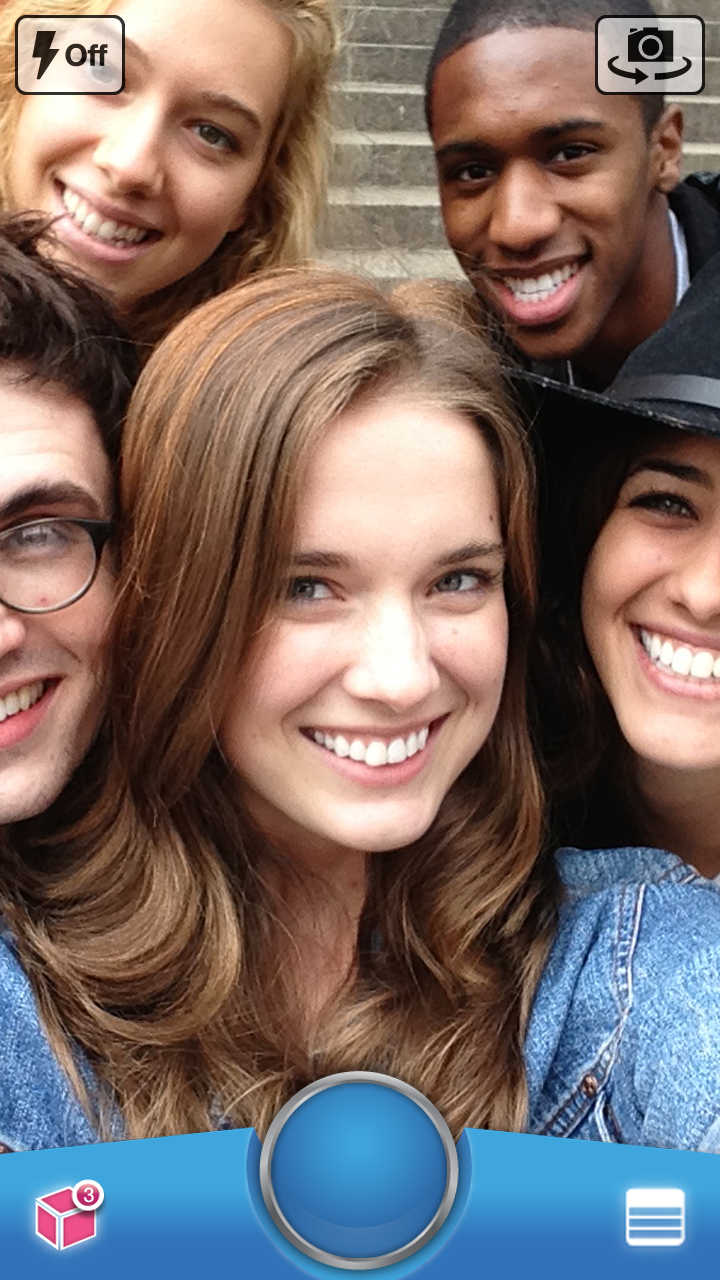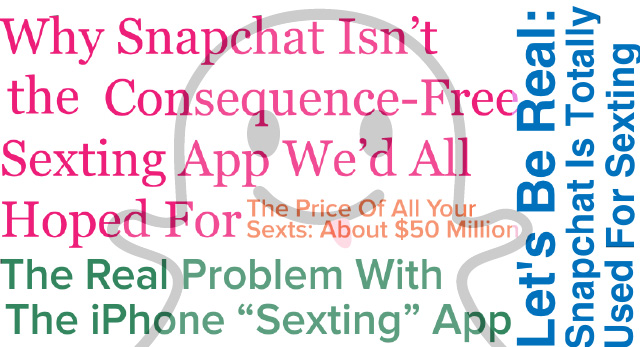 Snapchat, the popular impermanent photo-sharing mobile app, is rolling out a major new feature: video sharing. Users can now share 10-second videos the same way they share pictures — by taking the picture or video, setting a timer from 1-10 seconds for the content to disappear after the user opens it, and sending it to another user.
Snapchat, the popular impermanent photo-sharing mobile app, is rolling out a major new feature: video sharing. Users can now share 10-second videos the same way they share pictures — by taking the picture or video, setting a timer from 1-10 seconds for the content to disappear after the user opens it, and sending it to another user.
I’ve used the feature in beta and I’m a big fan. The time from opening the app to recording video is about a second, making it easy to quickly snap a video of your friends doing something stupid or funny. Video recording is currently only available for iOS users, although Android users can receive and view video snaps.
The video starts recording when you press and hold the center “record” circle and stops when you take your finger off of it. The process feels seamless and very similar to the user experience of opening and viewing snaps. It’s the kind of simple feature that I personally wouldn’t think of developing, but once I’ve used it I wonder why everything doesn’t record this way.
The update also includes a new “friending” process, where users have to accept each other as friends before they can send each other snaps. Previously, users could just snap any usernames they wanted; existing users won’t have to friend people who are already on their friend lists.
The friending process will make the “Chatroulette”-esque element of Snapchat voluntary, as users have to agree to snap with random people.
Evan Spiegel, co-founder and CEO of Snapchat, says the friending tool partially came about because most early users, including himself and most of his friends, had their first names as their usernames and were being bombarded with random “Hi” snaps.
He adds that the company’s focus will continue to be on mobile, despite the fact that the new friending tool and public web profiles could set up a social graph and network for Snapchat.
Of course, this new video feature will inevitably give rise to another round of lazy, small-minded posts about how the app can only be used for sexting.
Oh No, The Kids Are Sextin!
Some idiot went on a crusade last week to get as many naked snaps as possible from random users, took screenshots of them all and put them on a (now shut down) Tumblr, “Snapchat Sluts,” leading to another round of articles about how the app is just for sexting.
The narrative goes something like this: self-destructing photos have to be nude, otherwise why would they be self-destructing? Then Snapchat isn’t even a good sexting app — recent articles have pointed to the screenshot ability and the public top Snapchat friends lists as ways to get caught with your pants down or ways for your spouse to discover you cheating.
What if — and I know this is a huge leap — it isn’t actually designed or predominantly used for sexting?
There’s this odd disconnect with everyone I talk to and read regarding Snapchat, where they talk about how they just sent their friend a hilarious, totally PG Snapchat, and then they snicker about how every other user is sending dick pics.
Are people using Snapchat for sexting? Probably. Definitely.

The dumb, hilarious stuff we actually use Snapchat for (note the distinct lack of nudity)
But who cares? It’s a way to communicate. Of course people are going to use it for sex. Does anyone really think people aren’t using Skype, Facebook, FaceTime and other technology to sext? Let’s not forget that the term sexting came about from people sending sexual images and messages via SMS.
Oh, and a Congressman tweeted a picture of his junk. That happened.
Many media outlets, highlighted by this comically out-of-touch NBC piece, got attached to this sexting narrative and won’t let it go, missing out on a much more interesting trend.
Users have sent over 1 billion snaps on Snapchat. The majority of those images are funny, lighthearted communications. As images, they’re more appealing than text messaging, and being impermanent, there’s no mental filter.
“We’ve always built this product for ourselves and for our friends to have a silly way to communicate,” Spiegel tells me.
The app already has very high levels of engagement and is growing quickly. Given the importance of mobile and messaging, you would think more people would understand the intriguing combination of an industry-wide trend and hot app, rather than focusing on sexting.
Funding Rumors
Spiegel declined to comment on recent stories by GigaOm’s Om Malik and our own Eric Eldon, reporting that Snapchat is raising “north of $10 million” from Benchmark at a roughly $70 million valuation ($8 million at a roughly $50 million valuation, according to Malik).
“We’re fine on cash for now,” Spiegel says, admitting that server costs and other expenses are high. “Not to say that I don’t get VC emails every day.”
Snapchat is actively recruiting engineers from Stanford to join the five-employee company in Los Angeles, although Spiegel won’t say how many.
“It’s really fun to be able to hire people who use the product everyday and love it,” he tells me.
Monetization: Coming To An App Near You Soon
“We didn’t think we were ever going to raise venture capital so we were planning very early on to generate a revenue plan,” Spiegel told me in May.
This latest iteration raises a number of interesting possibilities for Snapchat to monetize, whether through advertising, premium versions, or some combination.
With a very captive audience, Snapchat could have very profitable ads. Imagine a picture snap once a day or every 10 snaps where you have to hold the image and view the ad for five seconds before using the app more. Or an advertising video snap that played on its own for 10 seconds, instead of you holding it down to view.
The problem with most mobile ads is that they take up too much of the screen at random times (Facebook app newsfeed, anyone?) and both mobile and web ads are ignored by users as they adjust to where the ads are located and just scroll past them.
Snapchat could offer advertisers a highly engaged user for a very brief period of time.
These ads would be most effective if they were targeted, similar to the way Facebook targets its ads. Unfortunately for Snapchat, it has little to no information about its users. So in order for an advertising strategy to work well, it would probably need demographic information from users at the very least.
Advertising could easily be complemented by a premium version without ads and with additional features (perhaps video longer than 10 seconds or audio snaps), either for a low monthly cost (similar to Spotify and Hulu for content, and similar to texting charges for messaging) or a low one-time cost (like popular messaging app WhatsApp).
Spiegel notes that the young company has maintained a focus on monetization and is excited about the options, but “in the grand scheme of priorities, reaching scale is more important.” He says they are currently prototyping ideas but can’t give a timeline on when users might see them.
For now, enjoy the fact that Snapchat is totally free and check out the video feature, teased in the video below and available via update for iOS.
